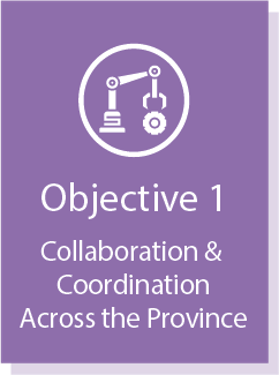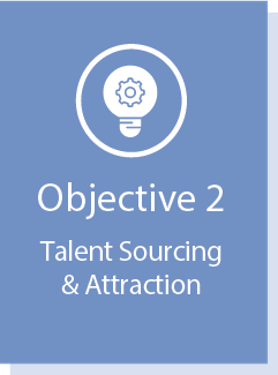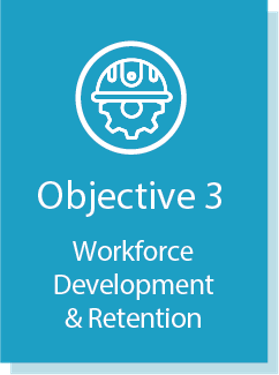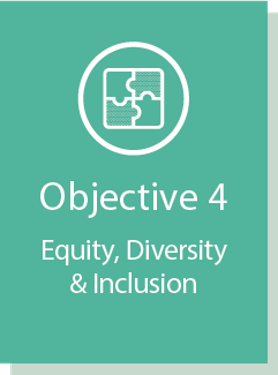2030 Vision for Ontario’s Automotive and Mobility Workforce
Ontario’s automotive and mobility sector has a highly skilled, adaptable, and diverse workforce reinforced by a global leading network that provides tailored and responsive initiatives that meet the evolving needs of the workforce.
Talent Strategy & Roadmap Objectives
To support the Vision, OVIN has developed 4 objectives:

Strengthen collaboration and coordination between government stakeholders across the province to support responsive skills planning and development for tomorrow’s workforce needs. Leverage the regional strengths to cultivate a complementary and coordinated approach to talent development and availability across Ontario.
Initiative 1: Launch an Automotive & Mobility Curriculum Collaboration Committee for the sector to support proactive curriculum development that reflects the rapidly evolving industry, and its corresponding talent and skill needs.
Initiative 2: Leverage existing automotive and mobility clusters to provide targeted skills and talent support and engage with external clusters to enhance regional integration.

Continue building a strong, agile, and diversified talent pool in Ontario with the right skills for the sector now, and into the future through talent identification and engagement.
Initiative 3: Enhance industry’s engagement with elementary, secondary, and post-secondary students to support greater awareness of sector career opportunities and reduce stigmas.
Initiative 4: Support the identification, attraction, and redeployment of talent from other sectors and jurisdictions that possess relevant transferable skills.

Support Ontario’s workforce to adapt and advance their skills and knowledge to the pace and scale of the automotive and mobility sector’s transformation.
Initiative 5: Elevate awareness of and enhance work-integrated learning (WIL) opportunities within the sector based on the needs of students, faculty, and employers.
Initiative 6: Provide a digital Upskilling Platform through which Ontario’s talent can access short-term courses, resources and understand how to upgrade their skillset to match available jobs.
Initiative 7: Develop a Reskilling Framework for the automotive and mobility sector and design responsive programs and initiatives to support worker reskilling.

Support groups who experience barriers to entry to the sector and enable industry access to diverse talent.
Initiative 8: Develop an EDI Advisory Committee for the sector to support the coordination and development of EDI-related opportunities to ensure support for the industry as it strives to achieve increased equity, diversity, and inclusion.
Initiative 9: Collaborate with underrepresented communities to evaluate existing skills and talent programs and develop approaches to co-design initiatives to address community-specific barriers, ensuring that intersectional identities are appropriately represented and acknowledged.
Talent Strategy & Roadmap Long-Term Plan
OVIN will work with partners across the province to implement tactics toward achieving a future-focused, competitive talent ecosystem for Ontario.

Talent Strategy and Roadmap
Ontario’s automotive and mobility sector plays a significant role in the province’s economy by generating investment, spurring innovation, and creating good-paying jobs and a talented workforce rooted in Ontario. This Talent Roadmap looks forward to the year 2030, outlining four objectives and nine initiatives that will ensure Ontario’s industry and its talent remains on the leading edge of the global sector.
Talent Strategy & Roadmap Approach and Methodology
The Talent Strategy & Roadmap was developed through a review, assessment, and prioritization of a comprehensive set of inputs, including:

Primary Research
Over 175 consultations and interviews, conducted in partnership with Invest Ottawa, with industry, academia, government, and the broader public sector.

Secondary Research
Literature reviews, leading practice identification, environmental scanning, and labour market analysis. These inputs build upon extensive research efforts, including various reports and other publications produced through OVIN.

Pilot Research
Lessons learned and insights derived from
OVIN-led pilots and pilots led by Invest Ottawa.
